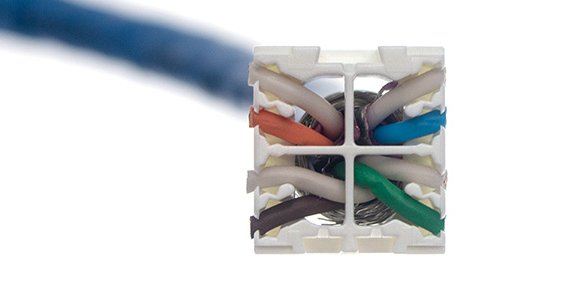Sesgo de retardo.
Los hilos de los cuatro pares de un cable de datos tienen torsiones diferentes, lo que da lugar a longitudes totales distintas. Por eso, las señales que viajan por los cuatro pares llegan en momentos distintos al receptor. Esta diferencia de tiempo se denomina desviación de retardo. Sigue leyendo para saber más sobre este tema.
El retardo de propagación es el tiempo que tarda una señal en viajar de un extremo a otro de un enlace. El skew de retardo es la diferencia de retardo, es decir, la diferencia de tiempo que tardan en llegar al receptor las señales que viajan por los cuatro pares de un cable de datos.

Gigabit Ethernet and the faster Ethernet versions divide the total data stream into four streams that travel along one wire pair each and transmit one fourth of the total data rate. The four data signals travel along the data cable simultaneously and the receiver combines them again to one. To make this work, the four signals have to arrive at the receiver almost at the same time. As the wire twist differs from one pair to another, the lengths of the pairs differ too and because of this the signals cannot arrive at exactly the same time at the receiver. The difference in time is called delay skew.
Trouble-shooting tips if delay skew tests fail
Typical cause of the problem | This might help |
Horizontal cable too long | Cut the cable (if possible) |
Patch cord too long | Use shorter patch cords |
Consolidation point cable too long | Use shorter consolidation point cable |
Pair twists differ too much | Cut the cable, replace cable |
Cable defective (material defect) | Replace cable |
Typical causes of delay skew problems and what might help to solve them.
Contact
Dirk Träger





